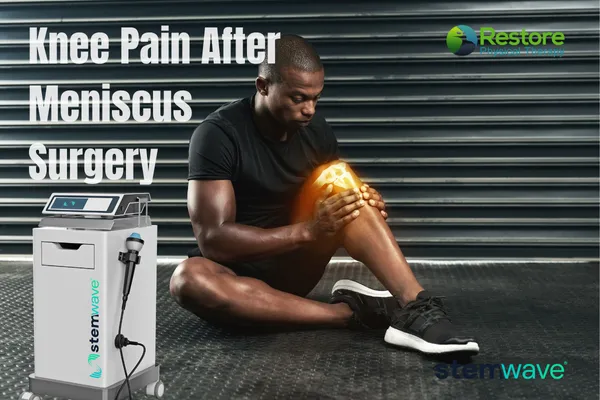
Knee Pain After Meniscus Surgery | Restore Physical Therapy Rochester Hills
Knee Pain After Meniscus Surgery: A Patient’s Journey to Lasting Relief in Rochester Hills
When Surgery Isn’t the Final Answer
Knee pain is one of the most common complaints among adults. From athletes to active grandparents, nearly one in four adults will deal with chronic knee pain at some point. For many, a meniscus tear is to blame.
Meniscus surgery can help, but what if the pain doesn’t go away? That was the frustrating reality for one of our patients here in Rochester Hills—and her journey may inspire you if you’re facing the same struggle.
Understanding the Meniscus
The meniscus is a C-shaped piece of cartilage in your knee that works as a cushion between your thigh bone and shin bone. It:
Absorbs shock during walking and running
Stabilizes the joint
Helps the knee move smoothly
When the meniscus tears, symptoms often include:
Knee pain with movement
Clicking or catching inside the joint
Swelling and stiffness
Difficulty bending or straightening the knee
Surgery is often suggested when conservative treatments don’t help. But it’s not always the final answer.
Why Knee Pain Can Linger After Meniscus Surgery
Even after surgery, many patients report ongoing pain, stiffness, or clicking. This can happen because:
Surgery trims or removes tissue but doesn’t always heal the joint.
Scar tissue can form, limiting smooth motion.
Inflammation may persist in the surrounding tissues.
Underlying joint degeneration (arthritis or cartilage wear) continues to cause discomfort.
Muscle weakness or imbalances keep placing stress on the knee.
This is why many people feel stuck—surgery was supposed to help, but the pain keeps interfering with daily life.
Tips for Healthier Knees (Even After Surgery)
Whether you’ve had surgery or not, protecting your knees is key to long-term mobility. Here are five wellness strategies you can start today:
Strengthen your thighs and hips. Strong quadriceps, hamstrings, and glutes take pressure off the knee joint.
Choose low-impact activities. Walking, cycling, and swimming are joint-friendly alternatives to running.
Warm up and stretch. Gentle mobility work before activity prepares your knee and reduces injury risk.
Wear supportive footwear. Proper shoes promote alignment and shock absorption.
Fight inflammation naturally. Hydration, a nutrient-rich diet, and good sleep all play a role in joint health.
A Rochester Hills Patient’s Story: Relief After StemWave Therapy
One of my patients had surgery to repair a torn meniscus, hoping to return to pain-free movement. But even after the procedure, she continued to experience pain and a constant clicking in her knee. She was frustrated and discouraged.
When she came to Restore Physical Therapy, we introduced her to StemWave therapy—a non-invasive treatment that uses advanced acoustic wave technology to stimulate the body’s natural healing response.
See Her Results After Just One Session
In the video below, you’ll see her performing functional movement tests. At first, her knee pain and clicking made these movements difficult. But right after her very first StemWave session, her pain levels dropped and she was able to move with much greater ease.
Patient demonstrating knee movement before and after her first StemWave session at Restore Physical Therapy, Rochester Hills.
Her story is one of many we’ve seen where StemWave provided real, measurable relief when traditional approaches fell short.
What Is StemWave Therapy?
StemWave is a safe, FDA-registered technology that delivers acoustic waves to targeted areas of the body. Unlike pain medications or injections, it doesn’t just mask symptoms—it helps stimulate healing at the cellular level.
Benefits of StemWave for Knee Pain Relief:
Reduces inflammation
Improves circulation
Promotes tissue regeneration
Breaks up scar tissue and adhesions
Non-invasive with no downtime
This makes it an excellent option for patients dealing with:
Persistent knee pain after meniscus surgery
Early arthritis
Overuse injuries
Sports-related joint pain
Frequently Asked Questions About Knee Pain After Meniscus Surgery
1. Why does my knee still hurt after meniscus surgery?
Persistent pain may be due to scar tissue, inflammation, early arthritis, or muscle imbalances that continue to strain the joint. Surgery repairs tissue but doesn’t always solve the root cause.
2. Is clicking in the knee normal after meniscus surgery?
Some clicking is normal, but clicking with pain often signals scar tissue or joint surface changes that need further care.
3. What are alternatives to knee surgery for meniscus tears?
Physical therapy, strengthening, lifestyle changes, and regenerative treatments like StemWave therapy can help reduce pain and improve function without more surgery.
4. Can StemWave therapy help knee pain after surgery?
Yes. StemWave stimulates circulation, reduces inflammation, and supports tissue repair. Many patients with post-surgical pain find it helpful.
5. Where can I find knee pain relief in Rochester Hills?
Restore Physical Therapy offers individualized treatment plans and StemWave therapy for patients seeking non-surgical relief from knee pain.
Ready to Find Knee Pain Relief in Rochester Hills?
If you’re still dealing with knee pain after surgery—or if you want to avoid surgery altogether—you’re not alone. Many patients come to us after they’ve tried everything without success.
At Restore Physical Therapy in Rochester Hills, we use StemWave along with customized physical therapy to help patients get lasting results.
Want to see if StemWave could be right for you? We offer a Free Consultation so you can explore this option risk-free.
Call us at (248) 844-2665 or click below to reserve your spot.

